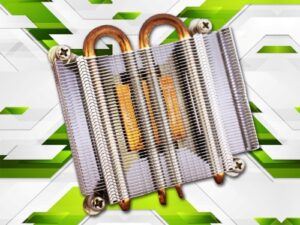ATS Offers Heat Sinks That Cool LEDs With High-Density, Lighter-Weight Zipper Fins
 New zipper fin heat sinks from Advanced Thermal Solutions, Inc. (ATS) are protecting thousands of components from the dangers of excess heat at a lower cost than other high fin density heat sink types.
New zipper fin heat sinks from Advanced Thermal Solutions, Inc. (ATS) are protecting thousands of components from the dangers of excess heat at a lower cost than other high fin density heat sink types.
Zipper fins are machined from thin sheet metal, typically aluminum or copper, and are formed into custom shapes. The sheets are designed to interlock with a very narrow space between their layers. The fin assembly is wave soldered to a metal base forming a very rigid, lightweight heat sink.
Zipper fin heat sinks allow the combined use of copper and aluminum materials. In these designs, the copper base allows for optimal heat spreading while the aluminum fins ensure the heat sink will be lightweight.
Click on the following link to read the full article about ATS offers heat sinks that cool LEDs with high-density, lighter-weight zipper fins

